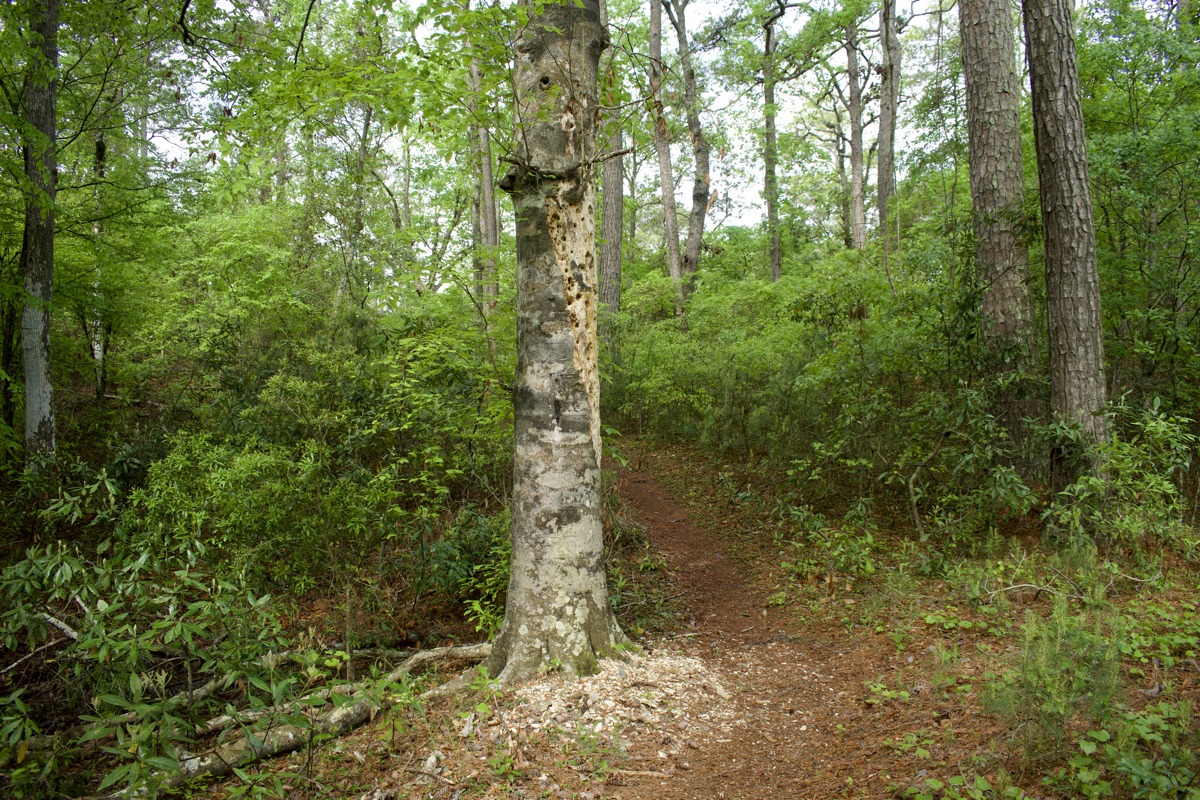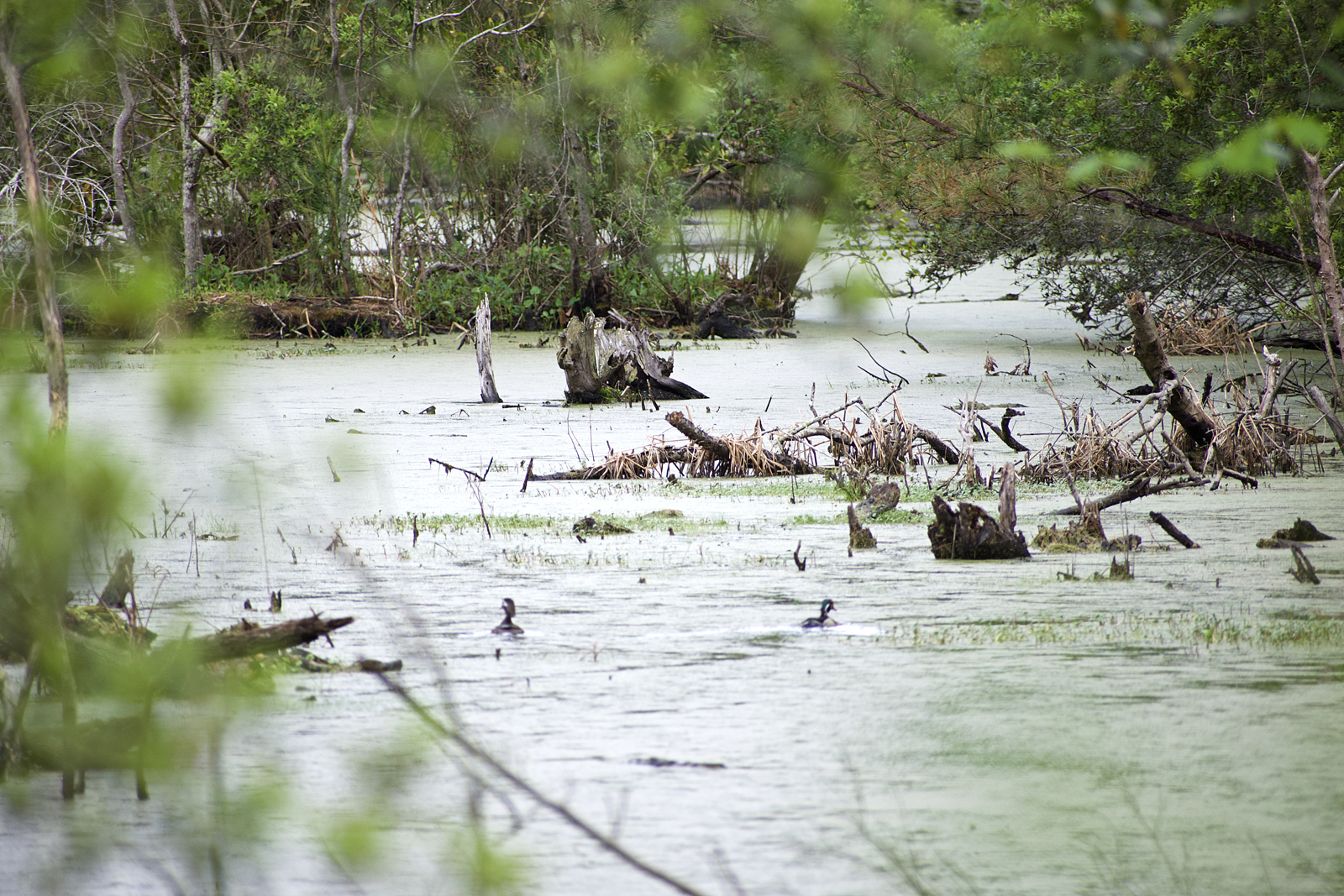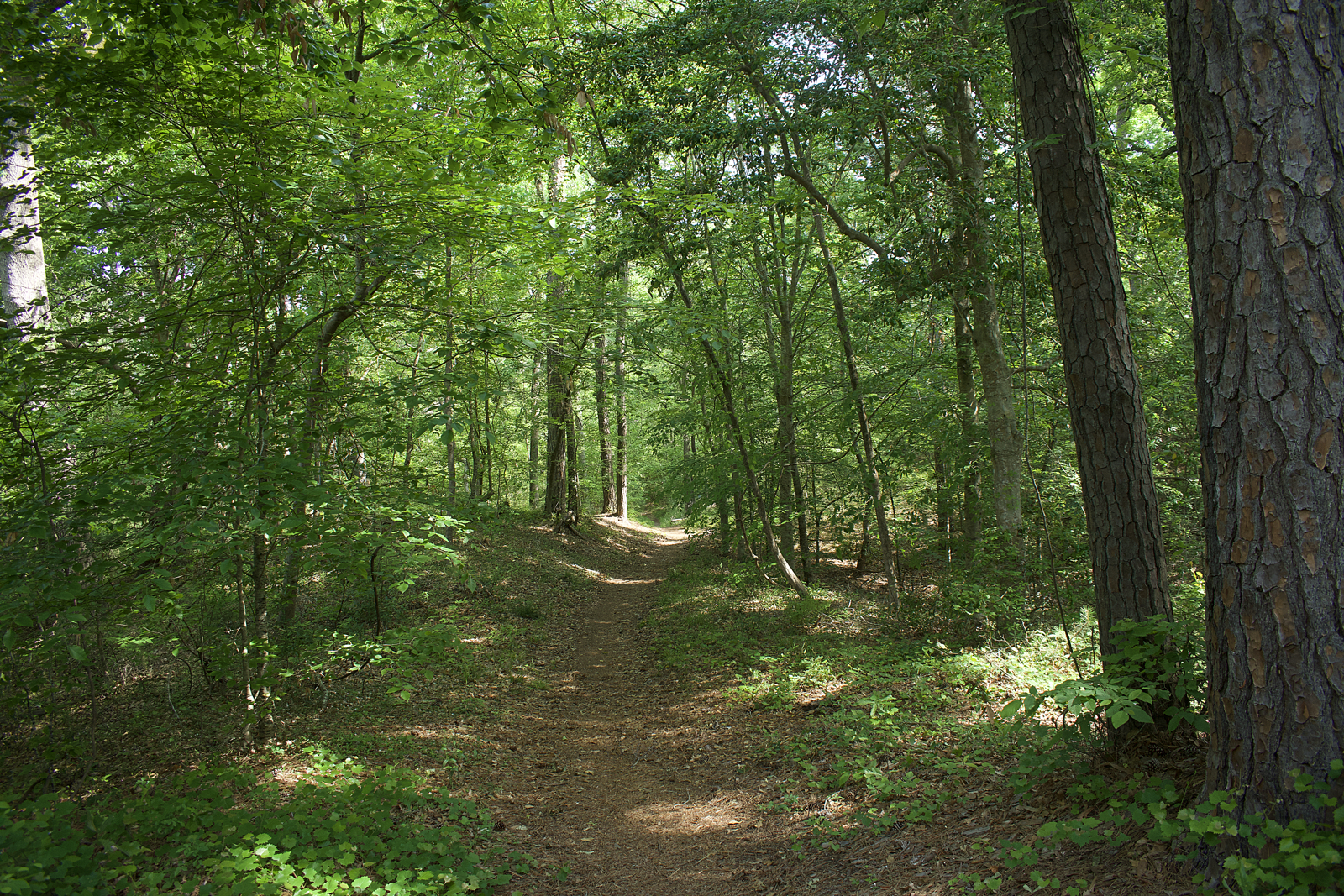
The woodpeckers have been particularly energetic this year in Kitty Hawk Woods. Or perhaps they have been more obviously active than in the past. There’s a tree along the Currituck Sound Path that gives stark evidence of their activity. Sawdust covers the ground around it, its trunk a pitted tribute to the power of a woodpecker’s beak.
There are three North Carolina Coastal Reserve sites on the Outer Banks, Kitty Hawk Woods, Buxton Woods and Currituck Banks. At 1,900 acres, Kitty Hawk Woods Reserve is the largest. It’s also the most difficult to access.
Supporter Spotlight
There are three trailheads, one is at the end of a series of dirt roads and the other two at the end of residential streets. There is barely room for two cars at any of the trailheads.
The trails, though, are beautiful, as much for the diversity of nature as their solitude. Occasionally another hiker will be met on a trail, but it’s rare. The trails follow low ridge lines, relict dunes, really, that are 10 or maybe 15 feet above the marsh and swamp at their base.
Sometimes the trails wander to the forest floor, and peering through the branches of the sweet gum and loblolly pine that line the banks, the swales are an explosion of color. In the summer it’s mostly green, but every shade of green imaginable.
Most of the mammals that live in the Kitty Hawk Woods are nocturnal, or active early morning or late evening. Squirrels, though, scamper up and down tree trunks and into the canopy.
The canopy is where the action is when walking the trails. There is a constant flutter of wings and the twitter and chirps of songbirds. Vireos and wrens flit through the branches and common grackles are … well, common.
Supporter Spotlight

In the swales, in the marsh and swamp, there are wood duck, heron and egret and an occasional green heron. Along the shoreline of Currituck Sound, osprey soar overhead.
There is also a kayak trail that runs through the heart of the preserve. The put-in is at the boat launch on Bob Perry Road giving access to Jean Guite Creek or Kitty Hawk Bay, and kayak is the preferred way to see Kitty Hawk Woods, according to site manager Jason Brown.
“The best way I have found to see Kitty Hawk Woods Reserve is from the water. Paddling Jean Guite Creek or Kitty Hawk Bay are both options to see the marsh and maritime forest of the Reserve,” he said.
The dense forest, low ridges and swales are little changed from the landscape that Amadas and Barlowe would have seen when they first set eyes on the Outer Banks in 1584.
Barlowe’s description of the dense forest, “we behelde the vallies replenished with goodly Cedar trees …” did not, however, describe what the “vallies” were like.
That description was reported by Wilson Angley in a 1995 research document, “A Brief History of Kitty Hawk Woods in Dare County, North Carolina,” written for the North Carolina Division of Cultural Resources about Kitty Hawk Woods.
In the document, Angley noted, “A manuscript map of 1851 … indicated that the Kitty Hawk Woods themselves were not regarded as suitable for residential use. The entire area east of Woods Road was described as consisting of ‘Small Sand Hills covered with Laurel Pine Holly interspersed with impassable swamps of Briers Gum Bay and small cypress Trees.’”

Little had changed when the Kitty Hawk Town Council wanted to preserve 455 acres on the east side of Kitty Hawk Road as the 1990s arrived.
Cliff Perry was the mayor of the town at that time. He recalled that there were about 460 acres the town council felt needed to be protected and to do so an environmental overlay was created for the area.
“Our desire was to preserve that land and keep it just preserved. It was on the east side of Woods Road,” he said. “A big part of that is swampy land. There’s some good high ridges but there’s a swamp in there.”
The site was dedicated in 1992 and from that time North Carolina and the town have worked together to enlarge the site.
“Since then the state has continued acquisition efforts with help from The Nature Conservancy, town of Kitty Hawk and grants from the North Carolina Natural Heritage Trust Fund and the U.S. Fish and Wildlife Service,” according to the Kitty Hawk Woods brochure.
It is not a virgin forest. The “goodly Cedar trees” were not the only trees in what was at one time a vast maritime forest.
Writing in 1856, Edmund Ruffin who toured coastal North Carolina before writing “Sketches of North Carolina,” noted that “The only trees of considerable size were loblolly pines … There were oaks and other trees of smaller size, and healthy growth. I was informed that live oaks, large enough for ship timber had been formerly cut down here, for that use.”
The 1850s were not the only time Kitty Hawk Woods was lumbered. In 1910, the land was sold to the Currituck Lumber Co. for $70,000. The company contracted with the Tunis Lumber Co. to harvest the trees and transport them to Elizabeth City.

To move the lumber to the Currituck Sound where it was tied into a raft and hauled by barge to Elizabeth City, a rail line was built. There is still evidence of that time.
The Barlow Trail runs from Barlow Lane to Ridge Road. It’s easier to get on the trail at Ridge Road. About a half-mile from the trailhead, a path runs off to the right.
Unlike the other trails in the reserve, this trail is level and straight. Graded banks on each side elevate it above the marsh. What this short spur of a trail represents is the remnants of the railroad that ran to the sound.
There’s other evidence that points to logging activities, as well.
“The forest that exists today has been influenced. Oaks were harvested first, subsequent logging has been described as leaving only the trees that were not merchantable and then dogwood trees,” Brownsaid. “A low number of live oak and an abundance of loblolly pine can be a sign of past logging on the coast.”
Although the area was owned by lumber companies, area residents were allowed to hunt and trap in the woods Perry said. Hunting is still permitted in Kitty Hawk Woods.
“The people that owned it for timber, they let people in and use it for hunting and whatever they want to as long as you didn’t bother with the timber and cut the trees, they were happy for the people who use it,” he said. “You know, for your own hunting, fishing, whatever you would like to go in and do.”







